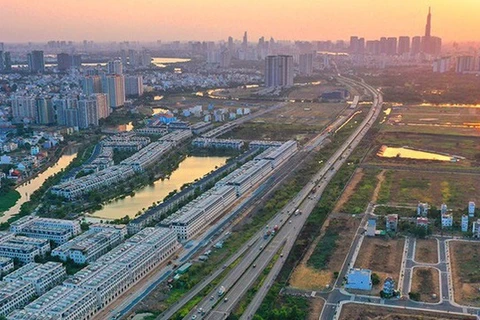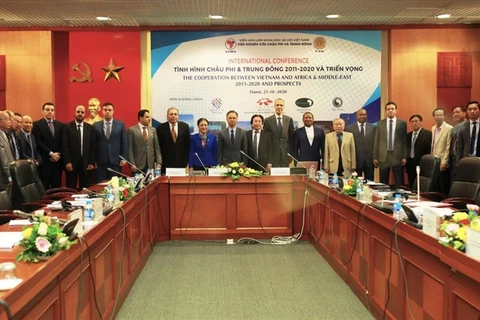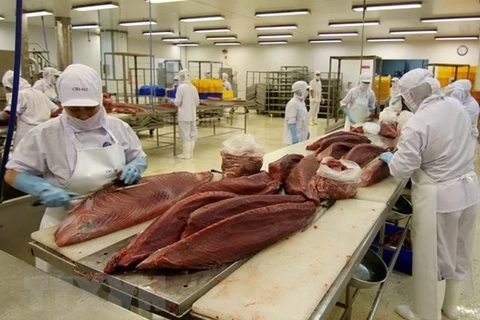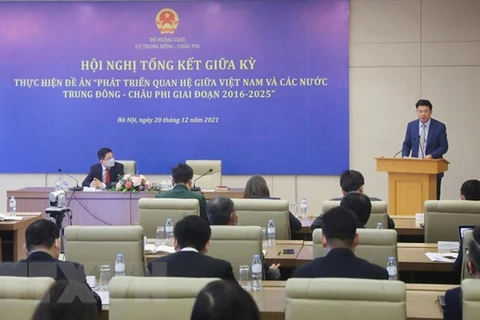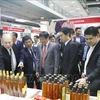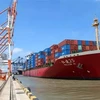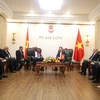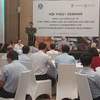HCM City (VNA) - The Middle East market still has a large room for Vietnamese businesses to boost exports, experts said at the seminar on "Golden opportunity for Vietnamese exports to Middle Eastern countries after the COVID-19 pandemic" on March 17.
Nguyen Tuan, Deputy Director of the Investment and Trade Promotion Centre of Ho Chi Minh City (ITPC), said that the region, encompassing 16 countries with a total population of about 400 million and high living standards, is emerging as a potential market for Vietnamese businesses. However, Vietnam's trade relations with the region mainly focus on the countries of the Gulf Cooperation Council (GCC) which consists of the United Arab Emirates (UAE), Saudi Arabia, Kuwait, Bahrain, Qatar and Oman with a combined population of 65 million in 2021.
According to Tuan, the Middle East has a very large import demand for furniture, plastic products, cereals, textiles, footwear, rubber and rubber products, meat, milk and dairy products, and vegetables, with the value of each commodity estimated at 2-8 billion USD.
These are all advantageous products of Vietnam, he stressed, adding that the proportion of these products of Vietnam in the import structure of Middle Eastern countries is still low.
Statistics show that these countries import about 80 percent of food and food stuffs, equivalent to about 40 billion USD a year. By 2035, the figure is expected to increase to 70 billion USD a year.
Another advantage when exporting to the Middle East is the import tax rates of only 0-5 percent, he added.
Vietnamese Ambassador to Kuwait Ngo Toan Thang said that in recent years, Vietnam's import and export turnover to GCC countries has increased rapidly, especially from 2012. The country's trade turnover to these nations raised from 2.7 billion USD in 2012 to 12.5 billion USD in 2021.
Nguyen Tuan, Deputy Director of the Investment and Trade Promotion Centre of Ho Chi Minh City (ITPC), said that the region, encompassing 16 countries with a total population of about 400 million and high living standards, is emerging as a potential market for Vietnamese businesses. However, Vietnam's trade relations with the region mainly focus on the countries of the Gulf Cooperation Council (GCC) which consists of the United Arab Emirates (UAE), Saudi Arabia, Kuwait, Bahrain, Qatar and Oman with a combined population of 65 million in 2021.
According to Tuan, the Middle East has a very large import demand for furniture, plastic products, cereals, textiles, footwear, rubber and rubber products, meat, milk and dairy products, and vegetables, with the value of each commodity estimated at 2-8 billion USD.
These are all advantageous products of Vietnam, he stressed, adding that the proportion of these products of Vietnam in the import structure of Middle Eastern countries is still low.
Statistics show that these countries import about 80 percent of food and food stuffs, equivalent to about 40 billion USD a year. By 2035, the figure is expected to increase to 70 billion USD a year.
Another advantage when exporting to the Middle East is the import tax rates of only 0-5 percent, he added.
Vietnamese Ambassador to Kuwait Ngo Toan Thang said that in recent years, Vietnam's import and export turnover to GCC countries has increased rapidly, especially from 2012. The country's trade turnover to these nations raised from 2.7 billion USD in 2012 to 12.5 billion USD in 2021.
He further said opportunities for Vietnamese businesses in this market are wide open with many advantages, as Vietnam has long-term diplomatic and cooperative relations with the GCC countries.
Experts said that current problems of Vietnamese enterprises in general and Ho Chi Minh City in particular when accessing the Middle East market are a lack of information, barriers to logistics and international payments. Therefore, it is necessary to promote market survey and trade connectivity activities, and meet with modern distribution channel systems in the Middle East, especially Vietnam’s two strong export markets of the UAE and Kuwait./.
Experts said that current problems of Vietnamese enterprises in general and Ho Chi Minh City in particular when accessing the Middle East market are a lack of information, barriers to logistics and international payments. Therefore, it is necessary to promote market survey and trade connectivity activities, and meet with modern distribution channel systems in the Middle East, especially Vietnam’s two strong export markets of the UAE and Kuwait./.
VNA

